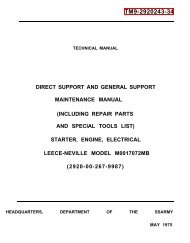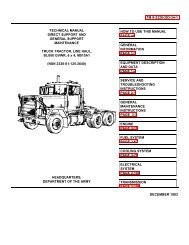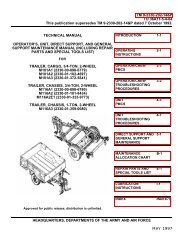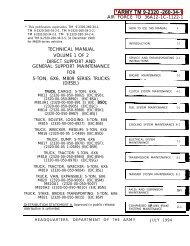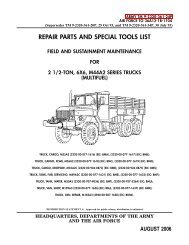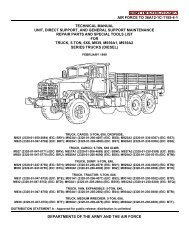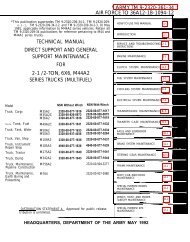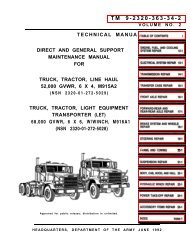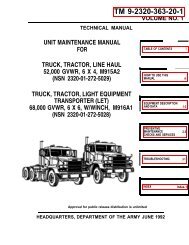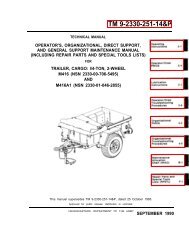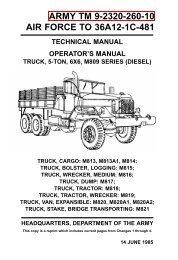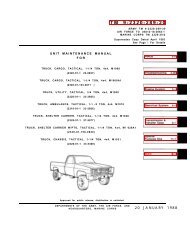Create successful ePaper yourself
Turn your PDF publications into a flip-book with our unique Google optimized e-Paper software.
TM 5-<strong>6115</strong>-631-14&PWARNINGDrycleaning solvent P-D-680 is both toxic and flammable. Wear safety gogglesand gloves and use in a well-ventilated area. Avoid prolonged breathing ofvapors and avoid skin contact. Do not smoke or use near open flame or excessiveheat. Flash point of solvent is 1<strong>00</strong>°F to 138°F (38°C to 59°C). If youbecome dizzy while using P-D-680, get fresh air immediately and get medicalaid. If P-D-680 contacts eyes, flush with water and get medical aidimmediately.(1) Keep it clean. Dirt, grease, and oil get in the way and may cover up a serious problem.Use drycleaning solvent P-D-680, to clean metal surfaces. Use soap and water to cleanrubber or plastic parts and material.(2) Bolts, nuts, and screws. Check them all to make sure they’re not loose, missing, bent, orbroken. Don’t try to check them all with a tool, but look for chipped paint, bare metal, orrust around bolt heads. If you find one loose, tighten it or report it to unit maintenance.(3) Welds. Look for loose or chipped paint, rust, or gaps where parts are welded together.If a broken weld is found, report it to higher level of maintenance.(4) Electrical wires, connectors, terminals and receptacles. Look for cracked or brokeninsulation, bare wires, and loose or broken connectors. Tighten loose connectors andmake sure the wires are in good condition. Examine terminals and receptacles forserviceability.(5) Hoses and fluid lines. Look for wear, damage, and leaks. Make sure clamps and fittingsare tight. Wet spots and stains around a fitting or connector can mean a leak. If a leakcomes from a loose connector, tighten it. If something is broken or worn out, report it tounit maintenance.b. Leakage Definitions. It is necessary for you to know how fluid leakage affects the status of yourequipment. The following are definitions of the types/classes of leakage you need to know to be ableto determine the status of your equipment. Learn and be familiar with them. When in doubt, NOTIFYYOUR SUPERVISOR!Leakage Definitions:Class IClass IIClass IllSeepage of fluid (as indicated by wetness or discoloration) not greatenough to form drops.Leakage of fluid great enough to form drops but not enough to causedrops to drip from item being checked/inspected.Leakage of fluid great enough to form drops that fall from the itembeing checked/inspected.3-3



